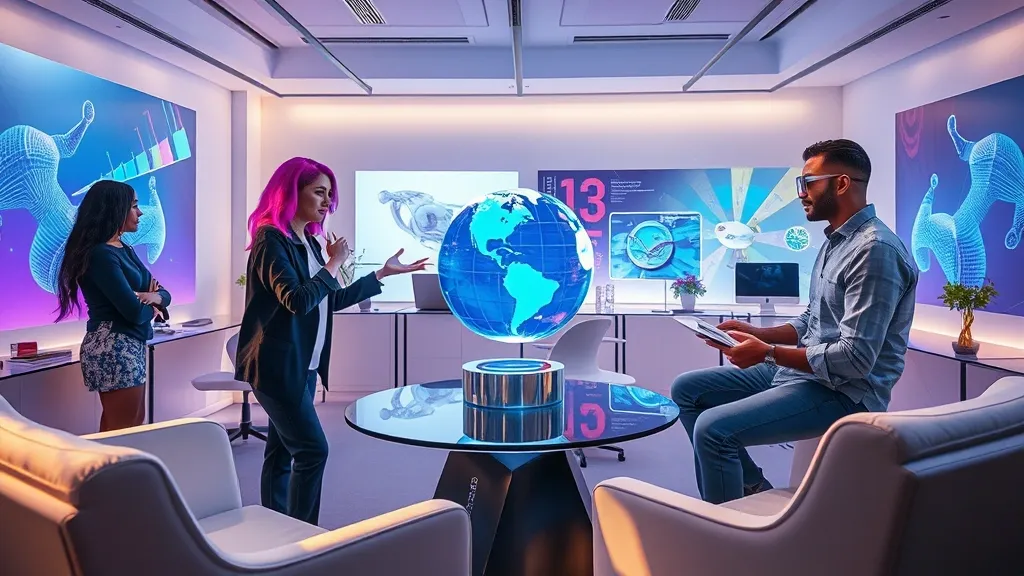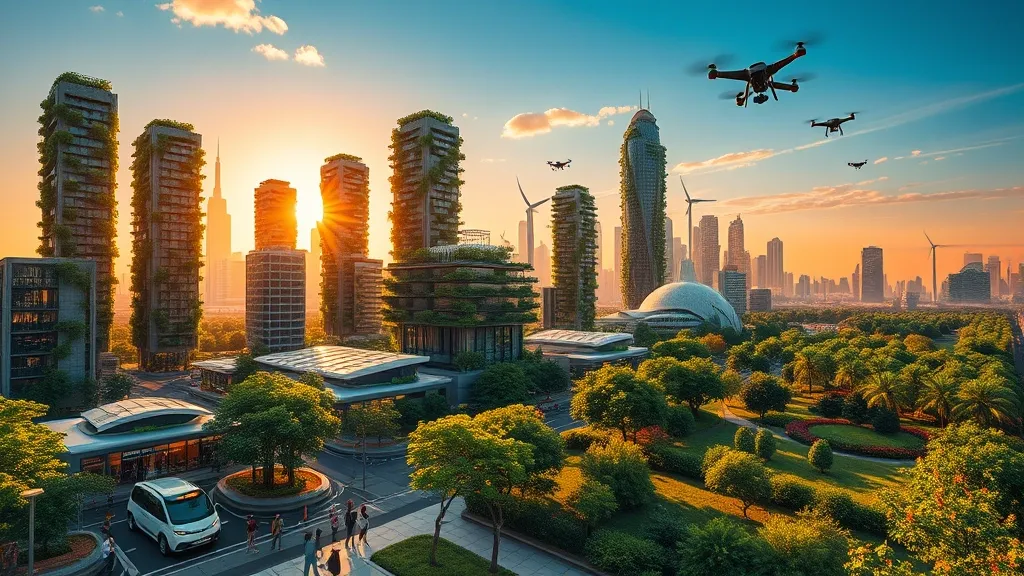The Holographic Revolution: Where Reality Meets Imagination
Alright, let’s dive into something super cool: the holographic revolution. I mean, who hasn’t dreamed of seeing a virtual projection of their favorite character or maybe even a life-size dinosaur right in their living room? Sounds like something out of a sci-fi movie, right? But guess what? We’re inching closer to that reality every day.
Holography isn’t just for those fancy concerts where they bring back dead musicians to perform (hey, Tupac!). It’s making waves in various fields like education, healthcare, and even entertainment. Imagine sitting in a classroom where your teacher can project a 3D model of the solar system. Kids would actually pay attention, right? It’s like Star Wars but without the pesky lightsaber battles (unless you count the ones in the playground).
One of the most mind-blowing applications is in surgery. Surgeons can now use holographic images to visualize organs and tissues before making any incisions. It’s like having X-ray vision but way cooler. This tech could seriously cut down on mistakes, which is something we definitely want when it comes to our health!
- Education: Holograms can transform boring textbooks into interactive experiences.
- Entertainment: Concerts and events could feature holographic performers, making every show unique.
- Design: Architects can walk through their designs before they’re built, saving time and money.
And let’s not forget about gaming. Holographic gaming could change the way we play forever. Instead of staring at a screen, you could literally step into the game. Imagine playing a horror game and having a ghost pop up right next to you! Talk about heart attacks!
But here’s the kicker: while the tech is advancing rapidly, there are still challenges to overcome. Accessibility and cost are big ones. Not everyone can afford the latest gadgets, and we don’t want this to be just another luxury item for the rich. It’s got to be for everyone, or what’s the point, right?
So, as we stand on the brink of this holographic age, it’s exciting to think about how it’ll reshape our interaction with the world. Reality and imagination are blending in ways we never thought possible. Who knows? Maybe one day, we’ll all have our own personal holographic assistants. Now, wouldn’t that be fun? Just pray they don’t have a mind of their own!
From Pixels to Polygons: The Art of 3D Printing Reimagined
So, let’s talk about 3D printing, shall we? It’s like magic, but instead of a wand, we’ve got fancy machines and a whole lot of creative energy. The way we’ve gone from digital pixels to tangible polygons is honestly mind-blowing. Remember when printing meant slapping down ink on paper? Now, we’re layering materials to create everything from prototypes to, I dunno, chocolate sculptures (yes, that’s a thing—thank you, modern technology!).
3D printing has evolved so much over the years. Once upon a time, it was this niche thing that only engineers and tech geeks really understood. But now? It’s everywhere. From home hobbyists creating little trinkets to big companies using it for rapid prototyping, the possibilities are practically endless. I mean, who wouldn’t want a custom action figure of themselves? Or maybe that’s just me…
- Accessibility: It’s getting easier for people to dive in. You can buy a decent 3D printer for your home without selling a kidney.
- Materials: We’re now printing with all sorts of materials—plastic, metal, even bio-materials that can be used for medical purposes. Crazy, right?
- Customization: Want a phone case that no one else has? Just design it and print it out! It’s like having your own personal factory.
But here’s where it gets really interesting. The future of 3D printing isn’t just about creating cool stuff; it’s about reshaping how we think about manufacturing altogether. We’re looking at on-demand production, which could cut down on waste and shipping costs. Imagine if you could print what you need when you need it, right at home or in your local community. It’s like the ultimate DIY project, but on a global scale!
Of course, there are challenges to tackle. Regulations, quality control, and safety concerns come into play, especially when it comes to printing items like medical devices or food. But hey, innovation isn’t without its bumps, right? It’s all part of the journey.
In conclusion, 3D printing is transforming our world from pixels to polygons like never before. It’s not just a trend; it’s a shift in how we create and consume. So, let’s keep dreaming big, because who knows what we’ll be able to print next?
Virtual Architectures: Building New Worlds Brick by Digital Brick
Alright, let’s dive into the wild world of virtual architectures! It’s pretty mind-blowing how technology is reshaping the way we think about space and design. I mean, remember when we used to sketch out our dream houses on napkins or in the sand? Now we’ve got powerful software that lets us create entire worlds without lifting a finger, except to click the mouse. Crazy, right?
With the rise of virtual and augmented reality, architects and designers are stepping into a whole new playground. They’re not just creating buildings; they’re crafting experiences. Imagine walking through a virtual replica of a historic site, or even your future home—before it’s even built! Talk about a game changer.
- Immersive Design: Tools like VR headsets let you walk through your designs. It’s like being inside a video game, but instead of saving the princess, you’re saving your sanity by visualizing that open floor plan!
- Collaboration Across Borders: Designers from anywhere in the world can team up in a virtual space. No more time zone drama or shuffling papers around—just good ol’ digital teamwork.
- Sustainability: Virtual designs can help minimize waste. You can test out materials and layouts without the cost of actual construction. It’s like a dress rehearsal for buildings!
But here’s where it gets really exciting. As technology advances, we’re seeing a shift from traditional design to something more fluid and dynamic. Buildings might not just be static structures anymore. They could adapt to our needs, like a living organism! Imagine a house that changes shape based on the weather or your mood. Okay, maybe that’s a bit of a stretch, but you get the idea.
On a personal note, I think the potential here is endless. I mean, if I could design my dream home in a virtual space, it would probably have a part-time pizza oven and a slide instead of stairs. Who wouldn’t want that? It’s all about creating spaces that reflect who we are and what we love.
As we continue to explore these digital realms, it’s clear that virtual architecture isn’t just a trend; it’s the future. So, buckle up! We’re just getting started, and I can’t wait to see where this ride takes us.
The Human Touch: Augmented Reality and the Future of Experience
So, let’s talk about augmented reality (AR) for a sec. You know, that tech that’s somehow made Pokémon pop up in your living room and turned your world into a giant video game? It’s not just for fun and games, though. AR is seriously changing the way we experience the world around us, and honestly, it’s kinda mind-blowing.
Imagine walking through a museum where, instead of just staring at paintings, you can point your phone at a canvas and see the artist’s process unfold right before your eyes. Suddenly, you’re not just a passive observer; you’re a part of the story. It’s like the art is speaking to you, and that’s a game-changer.
But here’s the kicker: AR isn’t just about enhancing experiences—it’s also about connecting us on a human level. We’re all about that shared experience, right? I mean, think about how much more memorable it is to share a laugh with friends while trying to catch a virtual creature than it is to just scroll through your social media feeds. AR has this amazing ability to bring people together, even if they’re miles apart. You can throw virtual birthday parties or even have a coffee date where you’re sipping lattes in your respective homes but chatting over a virtual table. How cool is that?
Now, let’s not forget the practical side of AR. It’s not just about fun times; it’s changing industries. Retail is getting a serious makeover. You can try on clothes virtually without stepping foot in a store, which means fewer awkward changing room moments (thank goodness). And in education, AR is making learning super interactive. Who wouldn’t want to dissect a virtual frog instead of dealing with the real thing? Eww!
- Enhanced Learning: Imagine seeing the solar system spin in your living room! Way better than just reading about it.
- Social Connection: Share experiences with people far away, like a virtual concert that feels real.
- Revolutionizing Retail: Try before you buy, minus the hassle of returns.
In the end, AR feels like the bridge between our digital lives and the real world. It’s not just tech for tech’s sake; it’s about how we relate to each other and our surroundings. As we keep diving into this augmented future, I can’t help but feel excited—and maybe just a little bit terrified. Who knows what’s next? Maybe we’ll all be living in a sci-fi movie sooner than we think!



